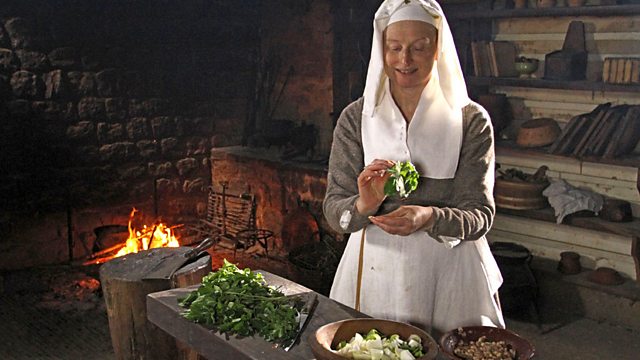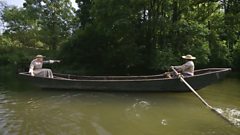
Episode 4
Historians run a farm in West Sussex exactly as it would have been in 1500. The team learn how important lead was as a building material, and experiment with a camera obscura.
Historian Ruth Goodman and archaeologists Peter Ginn and Tom Pinfold return to Tudor England, to work as ordinary farmers under the eye of a monastic landlord, learning to master the landscape away from the farm in order to supplement their income. The monasteries' lands covered a variety of terrain, which would need to be exploited by the tenant farmer to raise income for themselves and the monastery.
Lead was an important building material and Tom and Peter mine their own using Tudor techniques, while Ruth makes a stained glass window.
On the rivers owned by the monastery, tenant farmers could rent fishing rights. Ruth makes baskets to catch eels in and sets about trying to find some. Eels were a real treat in the Tudor period, eaten only on feast days by ordinary folk.
Back on the farm, the team learn how aspirational tenant farmers would have decorated and embellished their farmhouses. Ruth produces a wall hanging. Meanwhile, Tom experiments with a camera obscura so his portrait can be produced in the Renaissance style that was becoming all the rage in Tudor England.
Elsewhere on the farm, Peter is waiting to find out if his pigs are pregnant in order to keep up his enterprise, a lucrative money spinner.
The team's hard work is rewarded with a fine meal of eels in their newly decorated home.
Last on
More episodes
Previous
Next
Clip
-
![]()
Catching Eels
Duration: 01:00
Credits
| Role | Contributor |
|---|---|
| Presenter | Ruth Goodman |
| Presenter | Peter Ginn |
| Presenter | Tom Pinfold |
| Director | Stuart Elliott |
| Executive Producer | David Upshal |
Presenters
Meet the experts slogging it in the fields of the Tudor Monastery Farm.
Tom's blog: 'The animals were definitely the stars of the show'
'None of us liked the geese'

